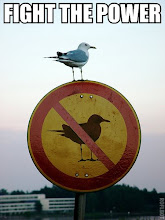I was asked what would you say to a wall the other day. This sparked a new interest. In this post, I will discuss the wall itself, so I can then go on to transcribe various conversations in more posts to come.
People tend to form opinions on any old subject. They have the particularly annoying habit of forming rather negative opinions on things which they don’t, or indeed can’t, understand. This is one of their more annoying traits; and unfortunately, it is not a trait easily escaped. You see, the average person doesn’t understand why the weather is always grey, so they decide to hate it. They don’t understand the finer points of calculus, so they decide to hate that. Indeed, the average person (sadly) does not understand how a wall can form opinions and have personalities. When the see me interested in what a wall has to say (they have plenty of interesting things to say, believe me), then they decided to form suitably negative opinions upon both me and my wall.
- Has Multiple Personality Disorder (MPD). They have two sides; and therefore have two different personalities. At first I thought that each side was, in fact, a different wall, but then one side would badmouth the other side, and start telling all its secrets (secrets that only the wall itself could know). So I have come to realize that every one wall has two personalities. Possibly more if one was to delve into further and more complex dimensions (but, alas, I have not)
- Has a slight disdain for the average person (when I say average person; I mean a person who does not even bother to start even the smallest conversation with a wall, such as ‘How are you today?’ or even ‘Lovely weather we’re having’. In fact, every time someone says ‘lovely weather we’re having’ whilst near a wall but is actually talking to someone else and not the wall itself, a wall ends up extremely disappointed and plants a curse on that person that has crushed their dreams).
- Is extremely lonely, since not many people stop to have a chat to them.
- Is fluent in Portuguese (I have no idea why; but I am seriously considering of taking a class in Portuguese, so that I will then be able to decipher what they sometimes mutter).
- Is a member of the WWF (Worldwide Wall Federation). They considered suing the World Wildlife Fund for the use of their copyrighted initials WWF, but in the end they didn’t bother since they couldn’t get a lawyer to notice them.
There are many different types of walls in many different types of settings; and you must approach this idea in much the same way as you would with people. In fact, the two are quite each other in many ways. The biggest difference between people and walls is that walls actually have something interesting to say.

No comments:
Post a Comment